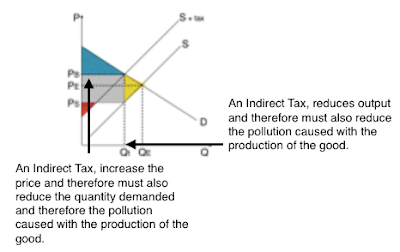2012 Oligopoly Multiple Choice
Oligopoly Cheat Sheet here.
Answer - (A) Oligopoly
Understand that the word interdependence = oligopoly
Answer - (C) A few competing sellers with similar products and high barriers to entry.
Recognise the definition of oligopoly?
Answer - (B) Both companies have an incentive to reduce production by 10%.
For the love of Pete, make a chart.
answer the chart.
Now, you know what they should do depending on the other (firms) actions,
but if they don't cooperate they don't know the other (firms) actions,
so, they don't cooperate.
Let us look at the answers 1 by 1
(A) Neither Company has a dominate strategy.
Actually both companies have dominate strategies UB (-10%) & UA (-20%)
Dominate Strategy - Best choice no matter the choice of the other participant. Doing the same thing no matter what the other firm does, is a dominate strategy.
Answer - (B) Both companies have an incentive to reduce production by 10%.
(B) is answered in the answer to (C), below
(C) Both companies have an incentive to reduce production by 20%
On first glance, this seems appropriate.
If they are both choosing to reduce by 20% then the payoffs would be $150 each, not bad.
but
this would only be true if they both new the information in the matrix
they don't
The problem says, based on the information, and assuming no cooperation,
assuming no cooperation implies they don't have information about the payoff matrix
so, if they don't know the information in the payoff matrix
they are going to choose the quadrant where they make the most money.
They do have the incentive of -20%, if they are cooperating
but they aren't cooperating.
The greedy principle....
Without knowing the information in the payoff matrix, they each choose the highest payoff
why not????
Because they both made the rational choice, highest payoff & didn't cooperate
they end up, making the least amount on the board.
(B) If the question had asked what the payoff would have been with no cooperation it
would have been
UA chooses -10% and receives $100
UB chooses -10% and receives $100
This was the question and is the answer to (B)
(D) Only UA has an incentive to reduce production by 20%
We can look at the graph directly above,, and see that with the greedy principle, not knowing the payoff matrix, and not cooperating that UA would choose the highest daily payoff
of $250 which is in the -10% quadrant
(E) Only UA has an incentive to reduce production by 20%
Same reason as (D) above but with UB
We can look at the graph directly above,, and see that with the greedy principle, not knowing the payoff matrix, and not cooperating that UB would choose the highest daily payoff
of $250 which is in the -10% quadrant
 |
| COLLEGE BOARD |



































